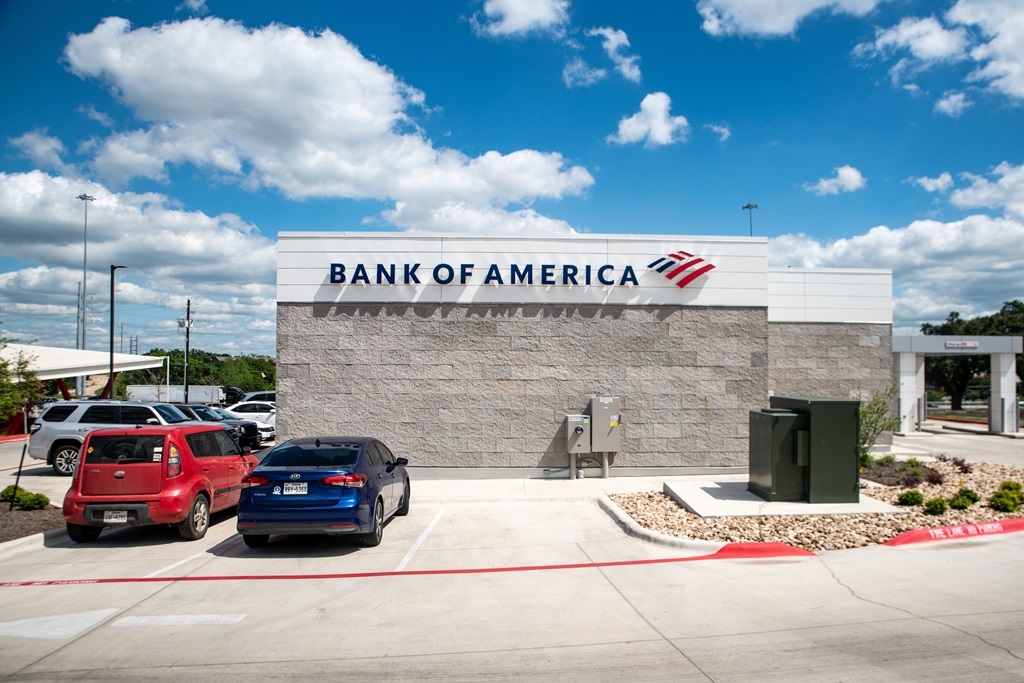How Many Bank of America Closings?

Getting your banking done used to mean walking into your local branch, chatting with the tellers, and sitting down with your personal banker. But times have changed, and so have the ways we bank. Online and mobile banking have become the norm, reducing foot traffic at physical bank branches. This shift has led major national banks like Bank of America to shutter locations across the country.
As of late 2023, Bank of America has closed over 100 branches and plans to shut down nearly 150 more in the next year. For some customers, this may come as an unpleasant surprise. If your local branch is on the chopping block, you likely have questions and concerns about what it means for your accounts and day-to-day banking. This comprehensive guide will walk you through Bank of America’s branch closure strategy, how you can find out if your branch is closing, what the closures entail, and most importantly, how it impacts you as a customer.
Why is Bank of America closing branches?
Mass branch closures may feel alarming, but they’re part of an industry-wide shift in how banks operate. As mobile and online banking grow exponentially year after year, fewer people visit physical locations to do their banking. Bank of America has seen in-branch transactions decline by 45% since 2014, while mobile logins have increased by 120% in the same timeframe. These changing usage habits have led them to reevaluate their massive branch footprint.
Bank of America currently has over 4,200 branch locations across the United States. But maintaining so many physical locations is expensive, especially as foot traffic declines. By closing underperforming and redundant branches, Bank of America can optimize costs and funnel resources into more profitable channels, like digital banking. Industry experts also speculate that the branch closures help fund the bank’s investments in new technology.
Additionally, Bank of America has faced pressure from Wall Street to improve profitability, which branch closures can help accomplish. Shutting down locations provides short-term savings on real estate costs, staffing, maintenance, and other overhead expenses. While customers may be inconvenienced, branch closures ultimately benefit the bank’s bottom line.
How many branches have closed and will close?
In 2023, Bank of America closed 95 branches across 21 states. The closures were concentrated in major metropolitan areas like Atlanta, Washington, D.C., Miami, and Chicago. Additional closures impacted some suburban and rural locations as well.
Looking ahead to 2024, the bank has announced plans to shutter approximately 134 more branch locations. The next round of closures will affect branches in 23 different states, continuing the trend of targeting urban markets. Major cities like Los Angeles, Dallas, Philadelphia, Pittsburgh, and Detroit will see double-digit branch closures.
Altogether, Bank of America aims to reduce its branch count by nearly 250 locations within two years. For perspective, that’s cutting almost 6% of its retail footprint. While significant, it still leaves them with thousands of remaining branches able to serve customers. Many closures target redundant branches concentrated in a small geographic area.
Here is a list of some of the states and branches that have been closed or are planned to be closed:
- Arizona: 3 confirmed (2023), 11 planned (2024).
- California: 32 confirmed (2023), 4 planned (2023), 11 planned (2024)
- Connecticut: 2 planned (2024)
- District of Columbia: 1 planned (2023)
- Florida: 4 confirmed (2023), 2 planned (2023), 1 planned (2024)
- Georgia: 2 confirmed (2023)
- Illinois: 3 confirmed (2023)
- Massachusetts: 5 confirmed (2023), 1 planned (2024)
- Maryland: 3 confirmed (2023), 1 planned (2024).
- Michigan: 3 confirmed (2023), 1 planned (2024).
- Missouri: 3 confirmed (2023), 1 planned (2024)
Please note that this list is not exhaustive, and Bank of America may announce more branch closings at any time.
How Do I Know If My Branch Is Closing?

Determining if your local Bank of America branch is on the chopping block can be tricky. The bank does not publish an official list of closures. Your best indication is the signage posted at the branch itself. Typically, closure announcements are posted 90 days before the scheduled shutdown date.
You may also be able to get closure details by contacting Bank of America’s customer service department. Ask if your specific branch location has been slated for closure, and if so, when its last day of operation will be. Be prepared to provide the full street address of your branch.
Additionally, local news outlets may report on upcoming Bank of America closures in your area. Monitoring local media and newspapers can help you stay aware of any announced closings coming to your neighborhood.
Online forums like Reddit also feature crowdsourced closure information. Bank of America customers often post closure rumors and notices for specific branches in subreddit threads. But take any unofficial online reports with a grain of salt.
What Happens to Safe Deposit Boxes at Closing Branches?
One major concern for customers is what becomes of the safe deposit boxes housed at closing branches. Rest assured, Bank of America has a process to handle safe deposit boxes during closures.
In advance of a branch shutting down, the bank sends registered letters to all safe deposit box holders. These notices provide details on the closure date and outline the next steps. Customers have 30 days from the date of the letter to visit the branch and remove all contents from their safe deposit box.
If you don’t empty your box within the 30-day window, Bank of America will send a second letter indicating they will transfer the box to another nearby branch. You’ll receive a follow-up letter with the new branch location and instructions for accessing the transferred box.
During the transition period, you can still access your safe deposit box at the original closing branch by appointment. Make arrangements by calling the branch ahead of time. Bank of America also grants refunds for any unused portion of your annual safe deposit box rental fee.
How Do Closures Affect Day-to-Day Banking?
Losing your primary bank branch can certainly disrupt your banking routine. But rest assured, you still have multiple options for conducting everyday transactions. With a bit of preparation, branch closures should not severely impact your daily finances.
First, many banking tasks can be handled online via the Bank of America’s website or mobile app. You can check balances, pay bills, transfer money, deposit checks, and more without ever stepping foot inside a branch. Review your digital banking options and take advantage of applicable features.
For cash transactions like withdrawals and deposits, you can utilize any of Bank of America’s extensive ATM networks. Locate nearby ATMs using the bank’s online ATM finder. Consider switching your account to one with expanded ATM fee waivers so you don’t incur charges at non-Bank of America machines.
You may also want to identify a new convenient branch location to handle in-person banking after your original branch shuts down. Bank of America’s online branch finder makes searching for nearby locations simple. Select another branch in your area and swing by to get familiar with the facility and employees before your regular branch closes.
For personalized assistance, book an appointment with a banker at your new branch. They can help transition your relationship and ensure continuity of service when the closure occurs. Leveraging appointment booking is also a great way to avoid waiting in potential lines as displaced customers flood neighboring branches.
While branch closures may limit full-service access, rest assured that your accounts remain fully intact. You maintain complete access to all your funds, accounts, and banking services, regardless of your branch closing. With a bit of proactivity, you can identify backup options to minimize disruption.
Do I need to close my accounts?
After learning your primary bank branch will shutter, you may wonder if it’s necessary to close your Bank of America accounts entirely. But there are good reasons to keep your accounts open, even if your particular branch will no longer exist.
Most importantly, Bank of America has an extensive footprint, with numerous branch and ATM locations still widely available. The closure of one localized branch does not eliminate your ability to bank in person. In all likelihood, another branch or ATM sits close by.
You also retain full access to all digital banking capabilities after a branch closure. Features like mobile check deposit, Zelle transfers, online bill payment, and account management remain completely available. Digital banking minimizes the need to visit a branch at all.
Additionally, closing accounts and switching banks is a hassle. It requires updating automatic payments, transferring direct deposits, ordering new checks, and more. If you’re otherwise satisfied with Bank of America’s services and capabilities, it’s often not worth the effort of uprooting to a new bank.
An existing Bank of America checking account also provides value. You maintain your tenure, qualifying you for loyalty perks like fee waivers. The length of your accounts also bolsters your credit history. Be sure to weigh these factors before rushing to close accounts and switch banks due to a localized branch closure.
How Do I Get Safekeeping Items from a Closed Branch?

In addition to safe deposit boxes, branch closures prompt the question of how to retrieve any other safekeeping items housed at the location. Common safekeeping items include birth certificates, titles, deeds, insurance policies, and more. Much like safe deposit boxes, you need to claim these items prior to the branch closure date.
For any safekeeping contents you didn’t already remove along with your safe deposit box, call the closing branch and schedule an appointment. Let them know you need to access the safekeeping contents before the upcoming closure. The branch will have you fill out a release form during your visit to claim the items.
Be aware that another nearby branch may also hold duplicates of certain safekeeping documents, like official titles and deeds. If so, you can coordinate with that branch location to access copies if needed. You may want to inquire about duplicate records when meeting with bankers at your new branch location.
Don’t wait until the last minute to retrieve safekeeping items from the closing branch. Schedule an appointment at least a few weeks prior to closure to ensure enough time to gather all your contents.
Can I Still Get Notarized Documents?
Losing your local bank branch may have you wondering where to access notary services going forward. Rest assured, Bank of America can still connect you to notarization; you just may need to visit a different location.
Many banks only offer notary services at select branches rather than all locations. When your branch closes, call around to other nearby Bank of America branches to check notary availability and make an appointment. The bank’s online branch locator shows which locations offer notarization.
In a pinch, Bank of America allows any of its branch bankers to notarize documents for existing customers, though they prefer appointments be made with designated notaries. Don’t hesitate to ask for notary help when visiting another branch.
As an alternative, many third-party notaries work out of places like UPS stores or local libraries. Search online directories to find options nearby if you need notarization without visiting a Bank of America branch. There are more convenient notarization options than ever before.
Are better deals available at credit unions?
Frustration over branch closures sometimes prompts Bank of America customers to consider jumping ship to a credit union. Credit unions are member-owned nonprofits known for great rates and service. When branches close, it’s natural to wonder if you might find a better banking experience elsewhere.
Credit unions often tout their extensive branch networks compared to big banks. But remember, you can still access any credit union branch or ATM when banking with Bank of America. Credit unions utilize shared branching, allowing members to conduct transactions at nearly 6,000 locations nationwide.
You may find slightly better savings rates at a credit union, but Bank of America offers competitive products like rewards checking and high-yield savings. Weigh the convenience of your existing accounts against any incremental rate benefits of switching. Also consider Bank of America’s extensive digital banking tools, which may exceed many credit unions’ offerings.
While credit unions have some advantages, Bank of America’s greater size allows for more widespread access and robust online and mobile features. Don’t assume a credit union is necessarily “better” without doing diligent research upfront.
Are in-person banking alternatives available?
Between online banking and an expansive branch/ATM network, Bank of America still provides ample access, even when your local branch closes up shop. But you may still desire an in-person banking experience or encounter needs that are not easily addressed digitally. If so, alternatives exist.
In partnership with some retailers, Bank of America offers banking access at local CVS, 7-Eleven, and other convenience store locations. Transactions like deposits, withdrawals, and balance checks are available. This provides physical branch-like access, even when your area lacks a stand-alone Bank of America location.
The bank’s banking centers located inside Merrill Lynch offices also remain an option. These offer teller assistance and in-person bankers ready to open accounts, provide loans, and more. Use Bank of America’s locator tool to find the nearest Merrill Lynch location.
Local libraries and grocery stores may also host “Bank on” hours, allowing branch-like services. Additionally, don’t forget about appointment booking. Set up a one-on-one meeting at any Bank of America branch when needing personalized service. The human touch remains accessible.
Will Bank of America add new branches?
While Bank of America prunes underutilized branches, they still actively develop new locations as well. These branches focus on convenience and technology over square footage. Their next-gen branch design prioritizes smaller footprints optimized for digital activity.
New branches feature interactive ATMs with expanded capabilities to drive traffic inside while reducing teller lines. Large tablets adorn the lobby for self-service account access. Touchscreens display informational content and provide quick access to online banking features.
Onsite bankers shift their focus to in-depth consultations rather than routine transactions. Private offices and conference rooms allow for personalized meetings. By merging digital convenience with human assistance, the bank hopes to create localized hubs that support customers’ evolving needs.
Bank of America plans to open dozens of these next-gen branches over the next few years, from urban metros to rural small towns. Keep an eye out for new locations coming soon to your area. Smart design will help them attract customers, not just with transactional convenience but also with expertise and guidance. The future remains human.
5 Key Takeaways

If you’re a Bank of America customer dealing with a branch closure, keep these essential points in mind:
- Branch closures are driven by declines in in-person traffic, aiming to optimize costs as digital banking accelerates. It’s not personal!
- You have options for everyday banking, like online tools, other branches, and ATMs. Closures need not disrupt your finances.
- Give yourself time to empty safe deposit boxes and claim other safekeeping items before your branch closes. Don’t wait until the last minute.
- Consider if you really need to close your accounts and leave Bank of America because of a local branch shutting down. Stickiness provides perks.
- Bank of America continues to develop next-generation branches focused on consulting versus transactions. The bank still values in-person banking in the digital age.
The Bottom Line
Bank of America’s plans to shutter over 200 branches by the end of 2024 certainly mark the end of an era. Rising digital adoption among its customer base continues to fuel a steep decline in in-person transactions. While branch closures may initially frustrate some customers, maintaining thousands of underutilized locations simply doesn’t make fiscal sense anymore.
As with any change, branch closures call for a bit of planning and adaptation. Take time now to understand the bank’s transition process before your local branch shuts down. Identify backup branches and digital alternatives to minimize disruption. While in-person banking may look different going forward, Bank of America’s comprehensive services remain intact. No matter which channel you use, they continue to stand behind their promise to deliver expertise, convenience, and exceptional financial solutions.
Frequently Asked Questions
How much advance notice will I get if my branch is closing?
Bank of America typically posts branch closure notices 90 days before the scheduled shutdown date. Registered letters are also sent to safe deposit box holders with details.
Can I transfer my accounts to another Bank of America branch?
Your accounts automatically remain active and can be accessed at any Bank of America branch after your original location closes. There is no need to formally transfer accounts to a new branch.
What if I have a loan or credit card through my closing branch?
Loans and credit cards are not tied to any specific branch location. You can continue handling payments and servicing at any Bank of America branch or digitally.
How do I get a refund on my safe deposit box fee?
After emptying your safe deposit box, Bank of America automatically refunds any unused portion of your annual fee. There is no need to request it.
How do I get coins and cash without my branch?
Utilize Bank of America’s ATM network to get cash 24/7. Coins can be obtained via coin-counting machines available at select branches and ATMs. Ask your new branch for the closest options.








